Last updated on
Discover the expenses involved in reglazing a kitchen sink as we dive into the factors that influence its cost, ensuring you make an informed decision for your home improvement project.
Are you tired of staring at your worn-out, stained kitchen sink every time you do the dishes? If so, reglazing may be a cost-effective solution for you. Reglazing is a process that involves refinishing the surface of your sink to make it look brand new again.
However, before diving into this project, it’s essential to know how much it will cost. In this article, we’ll break down the factors that affect the cost of reglazing a kitchen sink and give you an estimate of what to expect.
So let’s get started!
What's Inside
Reglazing Overview
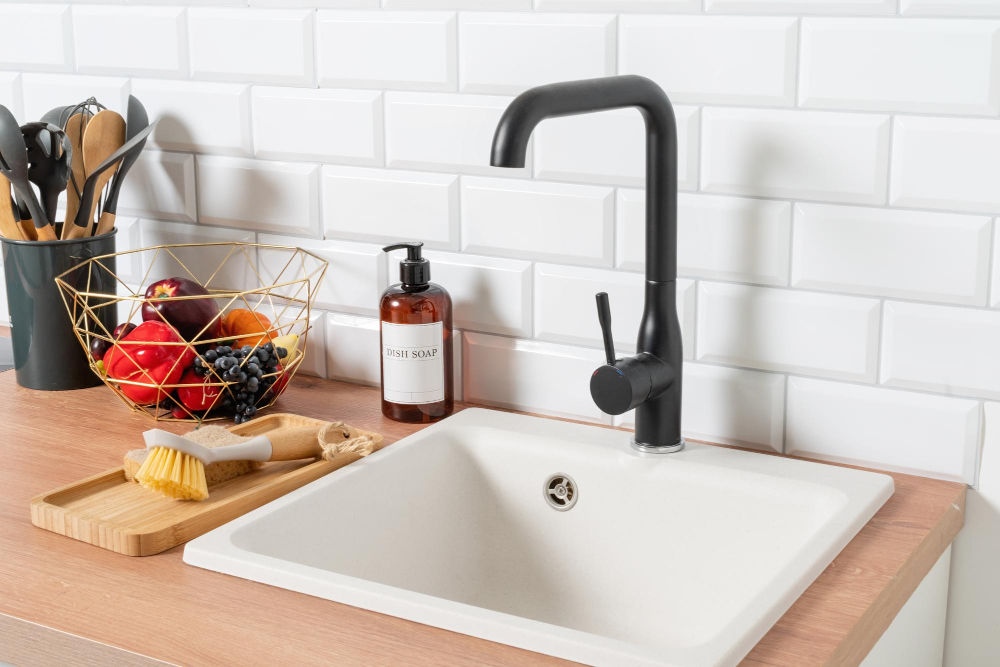
Reglazing, also known as refinishing or resurfacing, is a process that involves restoring the surface of your kitchen sink to its original condition. This method can be an excellent alternative to replacing your entire sink and can save you money in the long run.
Reglazing is typically done by applying a new coating over the existing surface of your sink, which covers up any scratches or stains and gives it a fresh look.
The reglazing process starts with cleaning and preparing the surface of your sink thoroughly. The technician will remove any dirt, grime, rust spots or other debris from both inside and outside surfaces using specialized cleaners before sanding down rough areas on porcelain sinks for better adhesion.
Once cleaned properly then they apply primer followed by several coats of paint until achieving desired color & finish; this step may take anywhere between 2-4 hours depending on how many layers are needed for coverage.
Sink Materials
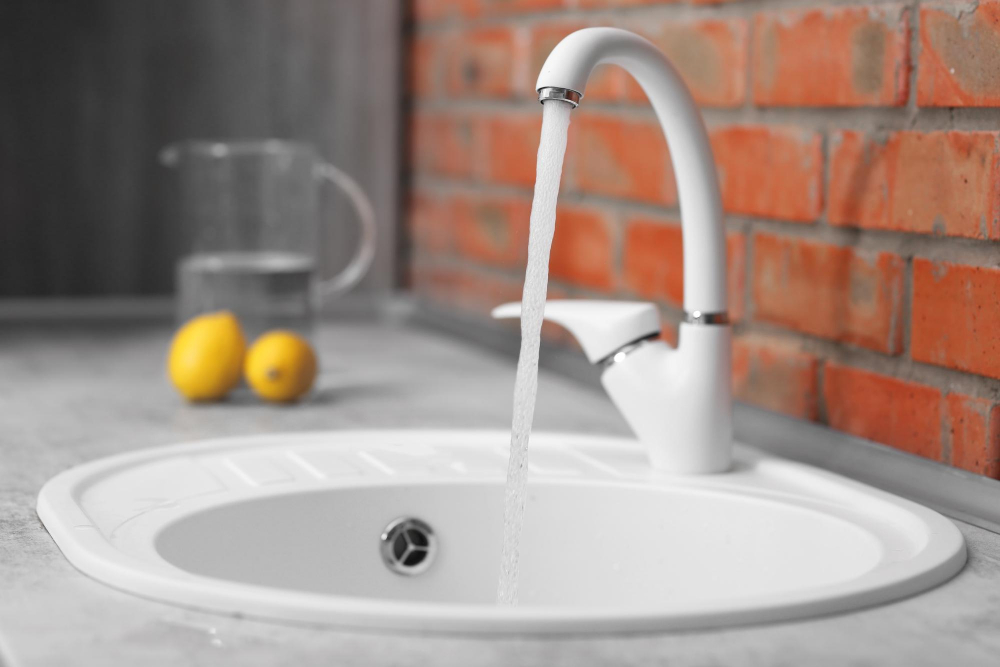
Different materials require different preparation processes and reglazing materials, which can affect the overall price. Here are some common sink materials and how they impact the cost:
Porcelain Sink: Porcelain sinks are popular for their durability, glossy finish, and easy-to-clean surface. Reglazing a porcelain sink is relatively affordable compared to other types of sinks.
Cast-Iron Sink: Cast-iron sinks have been around for decades due to their sturdiness and classic look. However, they require more preparation work before reglazing than porcelain or stainless steel options.
Stainless-Steel Sink: Stainless steel is another popular choice because it’s durable, lightweight, and resistant to rusting or staining over time. Reglazing a stainless-steel sink may be less expensive than cast iron but more costly than porcelain.
Granite Sink: Granite composite sinks offer an elegant look that complements modern kitchens’ design aesthetics; however ,regalzing them can be quite expensive due to its unique properties that make it difficult for refinishing products adhere properly.
Porcelain Sink
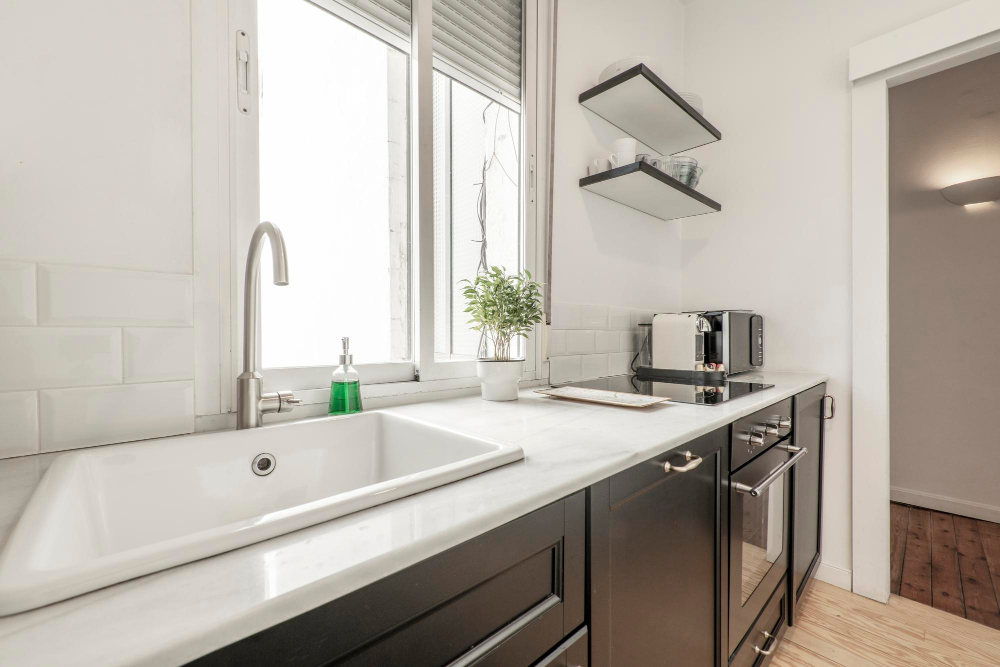
They are made by coating cast iron or steel with porcelain enamel, which gives them a smooth, glossy finish that is easy to clean. However, over time the surface of the sink can become chipped or stained from daily use.
Reglazing a porcelain sink involves sanding down the old surface and applying new layers of enamel to restore its original shine. The cost of reglazing a porcelain sink will depend on several factors such as size, condition, and location.
If your porcelain sink has minor chips or stains but is otherwise in good condition, reglazing may be an excellent option for you instead of replacing it entirely. Reglazing can save you money while giving your kitchen an updated look without having to replace everything.
However, if your porcelain sink has significant damage like cracks or deep scratches that cannot be repaired through reglazing alone; then replacement may be necessary.
Cast-Iron Sink
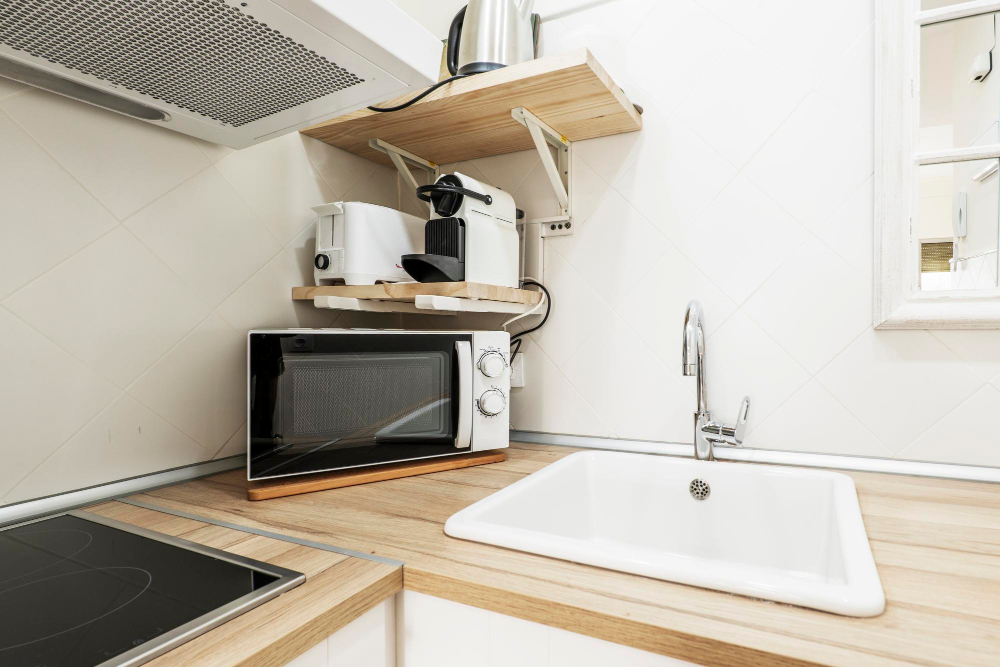
Cast-iron sinks are durable and long-lasting but can become chipped or stained over time. Reglazing can help bring back the luster of your sink without having to replace it entirely.
The cost of reglazing a cast-iron sink will depend on several factors, such as the size and condition of your sink. On average, expect to pay between $300-$500 for this service.
It’s important to note that while reglazing may be cheaper than replacing your entire kitchen sink, it’s not always the best solution for every situation. If there are significant structural issues with your cast iron-sink or if it has extensive damage beyond repairable chips or stains then replacement might be necessary.
Stainless-Steel Sink
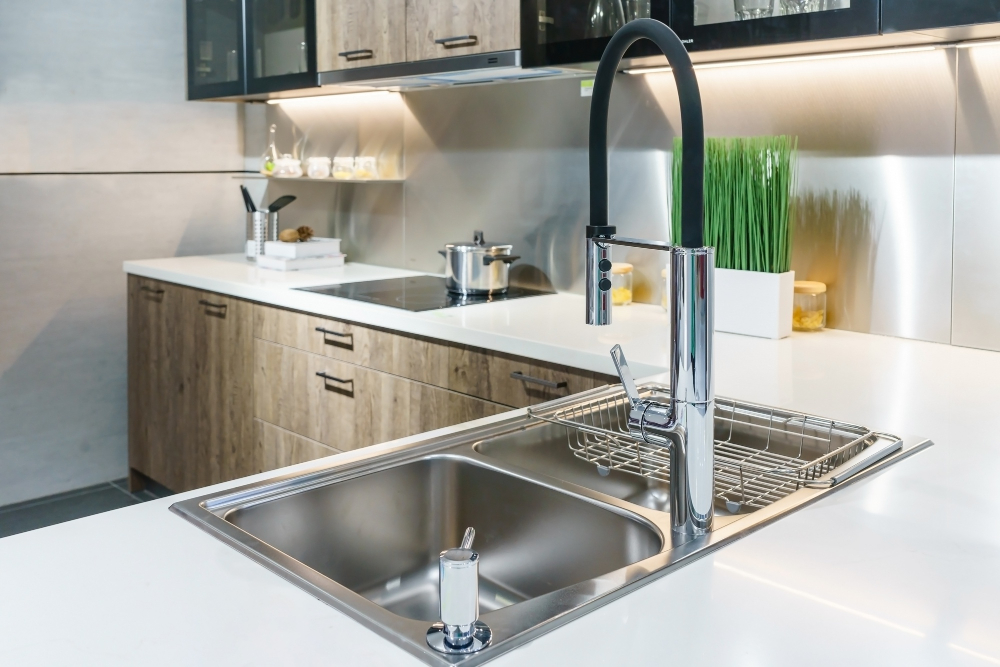
They are resistant to scratches, stains, and heat damage, making them an ideal option for busy kitchens. However, over time they can become dull or develop rust spots that make them look unsightly.
Reglazing a stainless-steel sink involves sanding down the surface of the sink to remove any imperfections before applying a new finish. The process is relatively straightforward but requires specialized equipment and expertise.
The cost of reglazing a stainless-steel sink varies depending on its size and condition. On average, you can expect to pay between $250-$500 for this service.
It’s important to note that while reglazing may be cheaper than replacing your entire sink with a new one; it’s not always the best solution in every case. If your stainless steel has deep scratches or dents that cannot be repaired through reglazing alone; then replacement might be necessary instead.
Granite Sink
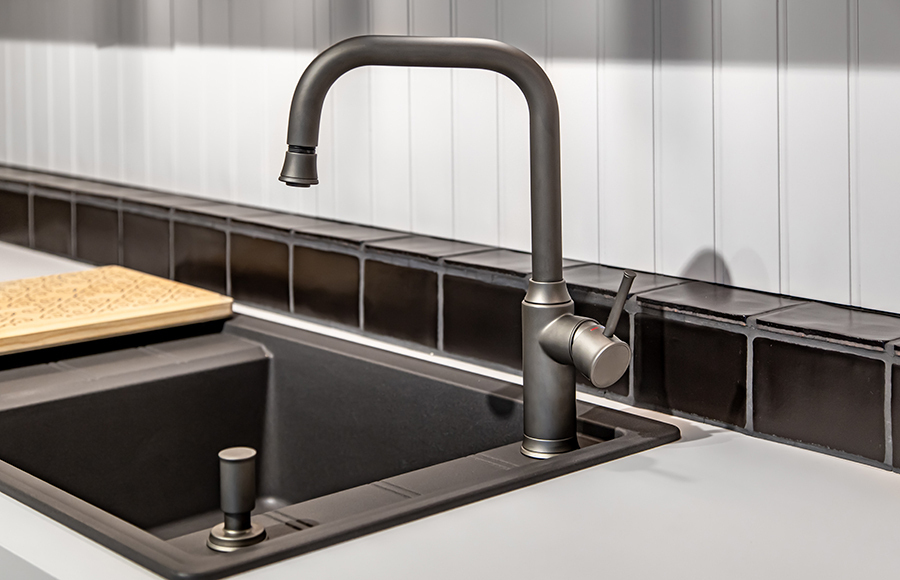
Reglazing a granite sink can be more expensive than other materials due to the specialized process required. The cost of reglazing a granite sink can range from $400-$800 depending on the size and condition of the sink.
Unlike porcelain or cast-iron sinks, which have smooth surfaces that are easy to refinish, granite sinks have porous surfaces that require special attention during preparation. Before reglazing a granite sink, it must be thoroughly cleaned and sanded down to remove any stains or scratches.
Once prepared, an epoxy coating is applied in several layers until it reaches the desired thickness. This process requires skill and experience as each layer needs time to dry before applying another coat.
Preparation Process
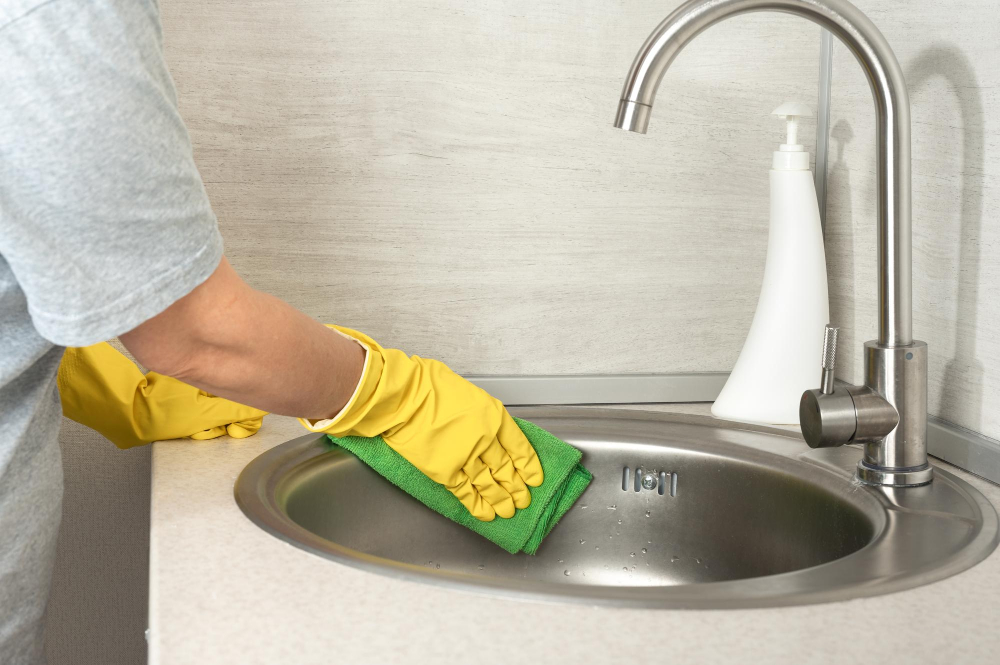
The preparation process is crucial as it ensures that the new finish adheres correctly and lasts for a long time. First, you need to clean your sink thoroughly with a non-abrasive cleaner and rinse it well with water.
Next, you’ll need to sand down any rough spots or chips on the surface of your sink using fine-grit sandpaper.
Afterward, fill in any cracks or chips using an epoxy filler designed explicitly for sinks. Once filled in and dried completely (usually overnight), use another round of fine-grit sandpaper over these areas until they are smooth.
The next step involves masking off all surrounding surfaces such as countertops and cabinets around the sink area so that no overspray gets onto them during spraying application.
Wipe down everything again with denatured alcohol before applying primer coat(s) followed by topcoat(s).
Sink Reglazing or Refinishing Material Prices
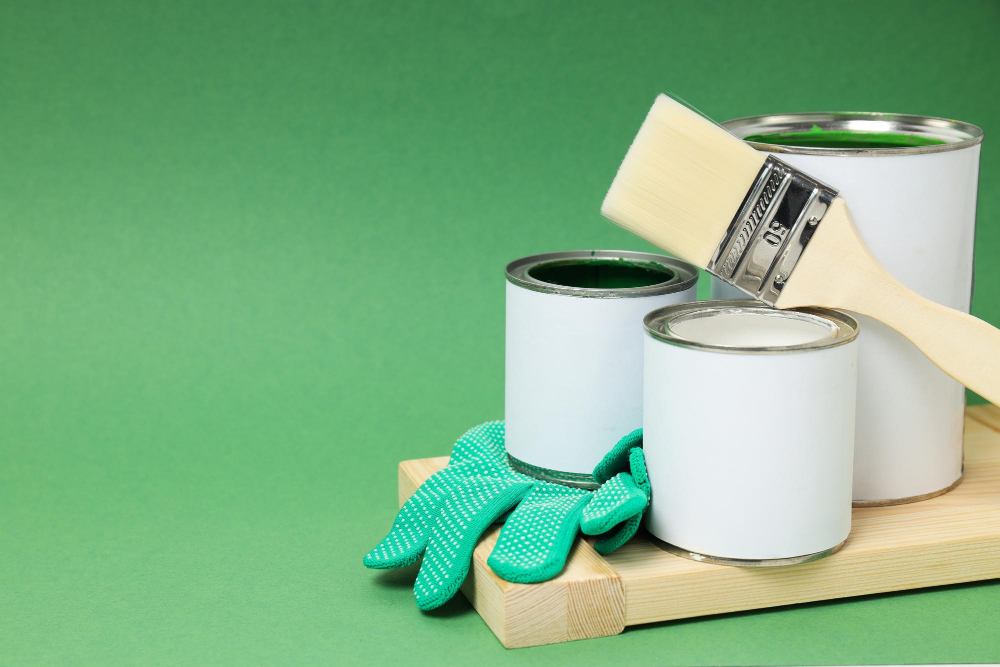
The materials used for reglazing or refinishing a sink include primers, coatings, and sealants. These products are available in different qualities and prices that can affect your overall budget.
For instance, high-quality epoxy-based coatings tend to be more expensive than acrylic-based ones but offer better durability over time. On average, you can expect to pay between $50-$150 for these materials alone.
It’s important to note that some companies may use cheaper products with lower quality standards which could result in an inferior finish that won’t last long enough before it starts peeling off or fading away.
Sink Reglazing or Refinishing Labor Costs

On average, you can expect to pay between $200 to $500 for labor alone. However, this cost may increase if your sink requires extensive repairs before it’s ready for reglazing.
It’s important to note that while DIY kits are available in hardware stores and online retailers at a lower price point than hiring professionals, they come with their own set of risks. If not done correctly by an experienced professional or someone who has experience in refinishing sinks themselves (and has all necessary equipment), DIY projects could end up costing more money due to mistakes made during application.
Hiring a professional is always recommended since they have specialized tools and knowledge required for proper preparation and application techniques that ensure long-lasting results without damaging your existing plumbing fixtures or surrounding surfaces like countertops.
Average Cost to Reglaze or Refinish a Sink

The cost can be higher for larger sinks or those made of more expensive materials such as granite. On the other hand, smaller sinks like bathroom ones may require less material and labor time, making them cheaper to reglaze.
It’s important to note that while DIY kits are available for around $50-$100, hiring a professional is recommended for best results. Professionals have access to high-quality materials and equipment necessary for proper preparation and application.
When considering the cost of reglazing your kitchen sink versus replacing it entirely with a new one, keep in mind that replacement costs can range anywhere from several hundred dollars up into thousands depending on factors such as material quality and installation fees.
Sink Refinishing or Reglazing Costs By Type
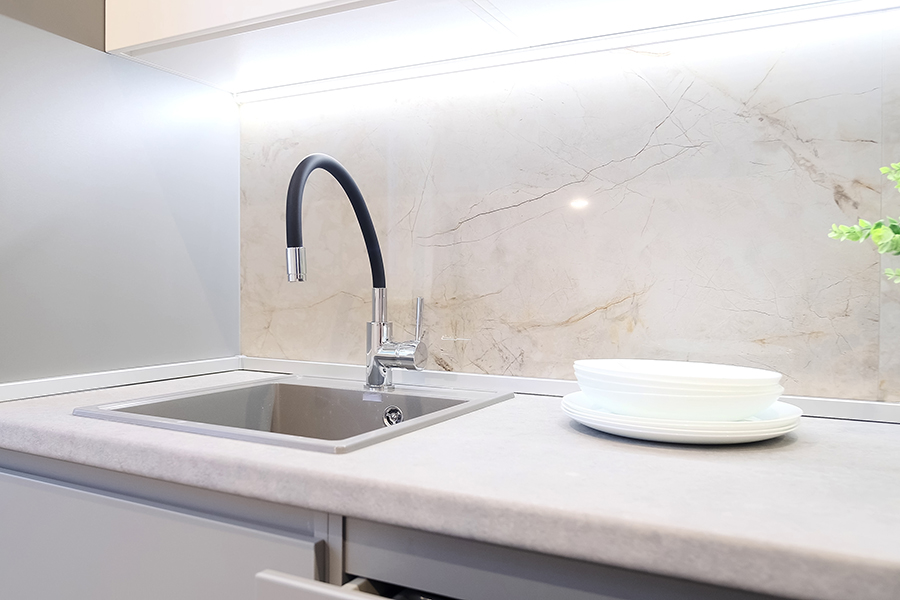
Porcelain sinks are typically the most expensive to refinish, while stainless steel and cast-iron sinks tend to be more affordable. Granite sinks fall somewhere in between.
Porcelain is a popular material for kitchen and bathroom fixtures because it’s durable, easy to clean, and has a classic look that never goes out of style. However, porcelain sink reglazing can be costly due to its delicate nature.
Cast iron is another common material used for kitchen sinks because it’s sturdy and long-lasting. Cast iron sink refinishing costs less than porcelain but more than stainless steel or granite.
Stainless steel is an excellent option if you’re looking for an affordable yet durable sink that’s easy to maintain. Stainless steel refinishing costs less compared with other materials since they require fewer steps during preparation before applying the new finish coat.
Granite composite sinks are becoming increasingly popular due to their durability and aesthetic appeal; however, they come at a higher price point compared with other materials when it comes time for reglazing or refinishing them.
Sink Refinishing or Reglazing Costs By Size

The larger the sink, the more materials and labor required to complete the job. Typically, kitchen sinks are larger than bathroom sinks and will cost more to refinish or reglaze.
For instance, a small bathroom sink may only require one quart of refinishing material and take about two hours for a professional to complete at an average cost ranging from $200-$400. On the other hand, a large cast-iron kitchen sink may need up to three quarts of refinishing material and take four hours or longer for an expert technician at an average price range between $350-$600.
It’s essential to note that these estimates are just averages as prices vary depending on location, contractor experience level, type of finish used (epoxy vs acrylic), among other factors.
Sink Reglazing or Refinishing Cost Factors
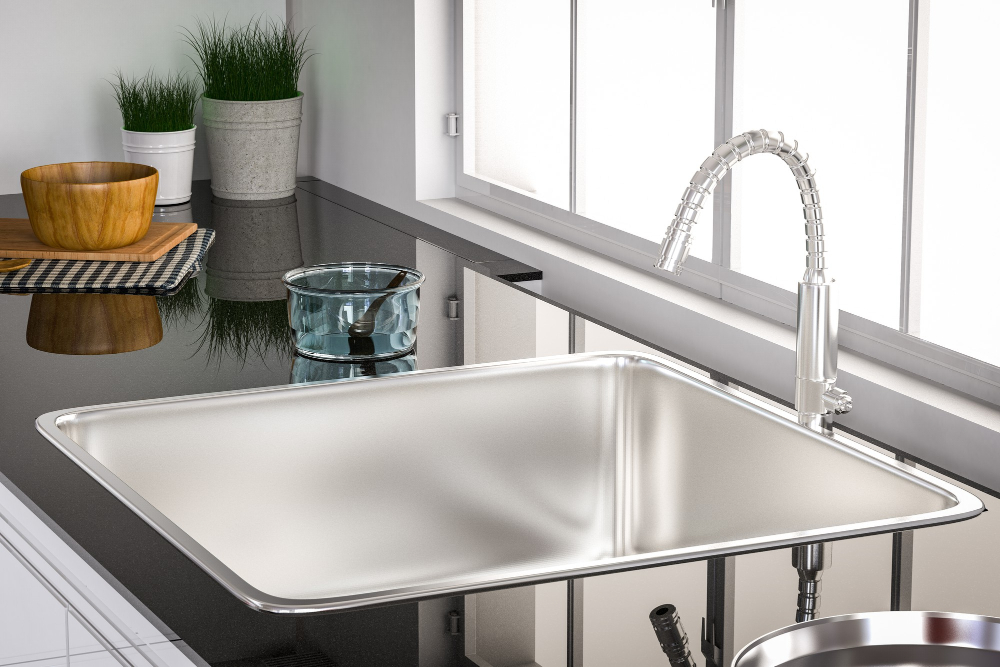
The type of material your sink is made from plays a significant role in determining the overall cost. Porcelain sinks are typically more expensive to refinish than stainless steel or cast-iron sinks due to their delicate nature and intricate designs.
Another factor that affects the price is the size of your sink. Larger sinks require more materials and labor, which can increase costs significantly.
The condition of your existing sink also impacts how much you’ll pay for reglazing or refinishing services. If there are deep scratches, chips, or cracks on its surface, it may require additional preparation work before being refinished properly.
Lastly, where you live can affect pricing as well since labor rates vary depending on location and demand for these services in different areas.
Kitchen Vs. Bathroom Sinks
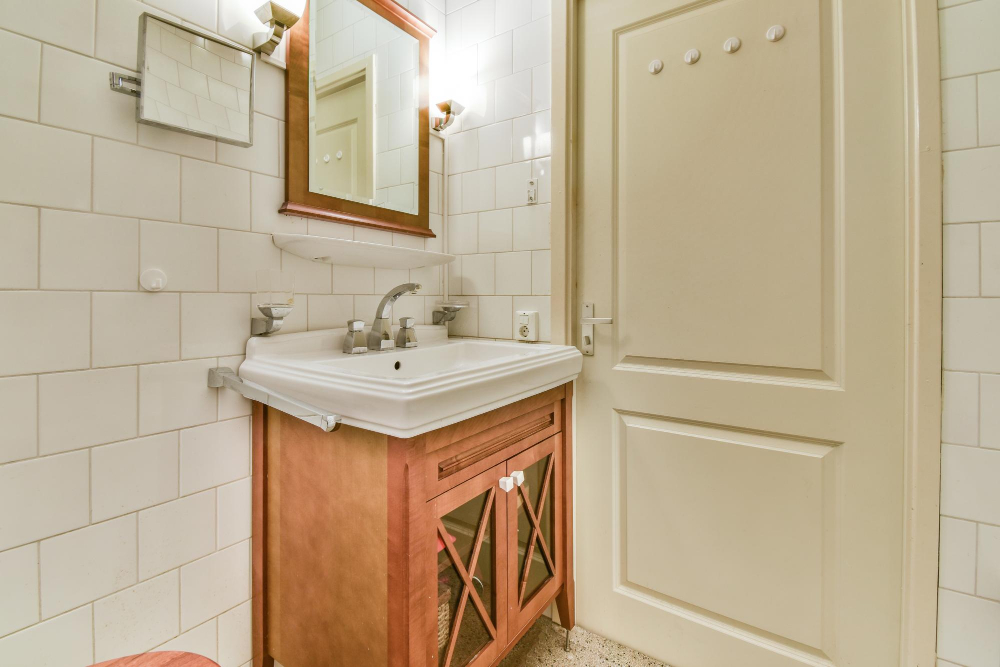
Bathroom sinks are typically smaller and less expensive than kitchen sinks. However, if you have a larger bathroom sink or one made of an expensive material like granite, the cost may be higher.
Kitchen sinks tend to be larger and more heavily used than bathroom sinks. They also come in different materials such as porcelain, cast iron, stainless steel or granite which can affect the price of reglazing them.
Since kitchens are often considered the heart of a home where people spend most time cooking and entertaining guests; homeowners may want their kitchen sink to look its best at all times.
Time Required
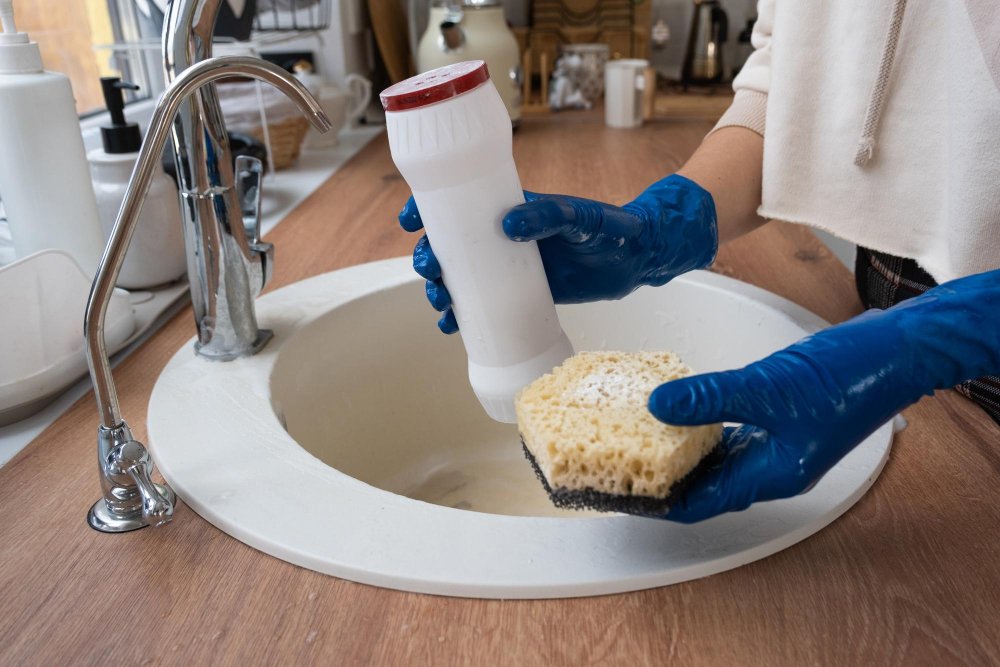
On average, it takes about four hours to complete the process from start to finish. However, this can vary depending on whether you choose to do it yourself or hire a professional.
If you decide to tackle this project yourself, keep in mind that it may take longer than expected if you’re not experienced with DIY projects. You’ll need time for preparation work such as cleaning and sanding down your sink’s surface before applying any refinishing material.
On the other hand, hiring a professional will save you time since they have experience working with different types of sinks and know how much prep work is necessary for each one. They also have access to specialized tools that make their job more efficient.
DIY Vs. Hire a Reglazing or Refinishing Pro

While DIY may seem like an attractive option due to its lower cost, it’s essential to consider the risks involved. Reglazing requires specialized equipment and materials that can be dangerous if not handled correctly.
Mistakes made during the process can lead to costly repairs or even replacement of your sink.
On the other hand, hiring a professional ensures that your sink will be reglazed correctly and efficiently without any risk on your part. Professionals have experience in handling different types of sinks and know how best to prepare them for reglazing.
Ultimately, whether you choose DIY or hire a pro depends on several factors such as budget constraints and personal preferences regarding home improvement projects’ involvement level. However, keep in mind that while DIY may save money upfront; it could end up costing more in repairs down the line if done incorrectly.
Pros and Cons

Here are some of the pros:
1. Cost-effective: Reglazing is cheaper than replacing your entire sink.
2. Time-saving: The process takes less time compared to installing a new sink, which can take days or even weeks.
3. Aesthetically pleasing: Reglazing gives your old, worn-out sink a brand-new look that will enhance the overall appearance of your kitchen.
4. Eco-friendly: By reglazing instead of replacing, you’re reducing waste in landfills by keeping an existing fixture out of it.
However, there are also some cons to consider before deciding on reglazing:
1. Durability concerns: While reglazed sinks can last for several years with proper care and maintenance, they may not be as durable as new ones since they have undergone refinishing processes that could wear off over time.
2. Limited color options: If you want to change the color or design of your current sink entirely, then reglazing might not be suitable for you since it only involves resurfacing rather than changing its structure completely.
Alternatives to Reglazing
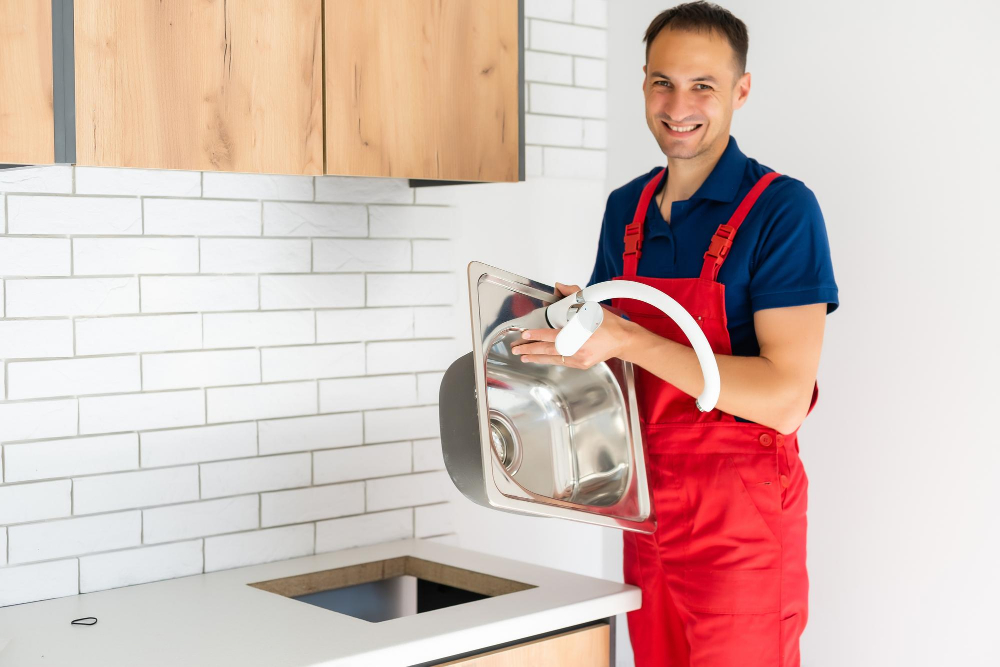
One of the most popular options is replacing the sink entirely. While this may seem like a more expensive solution, it can be cost-effective in the long run if your current sink has significant damage or wear and tear.
Another alternative to reglazing is using a sink liner or cover. These products come in various materials such as plastic, vinyl, and stainless steel and can be custom-fit to your existing sink’s dimensions.
Sink liners are easy to install and remove when needed but may not provide a permanent solution.
Lastly, you could opt for painting your kitchen sink with specialized paint designed specifically for sinks’ surfaces. This method requires thorough preparation of the surface before applying multiple coats of paint that will bond with it permanently.
Sink Maintenance
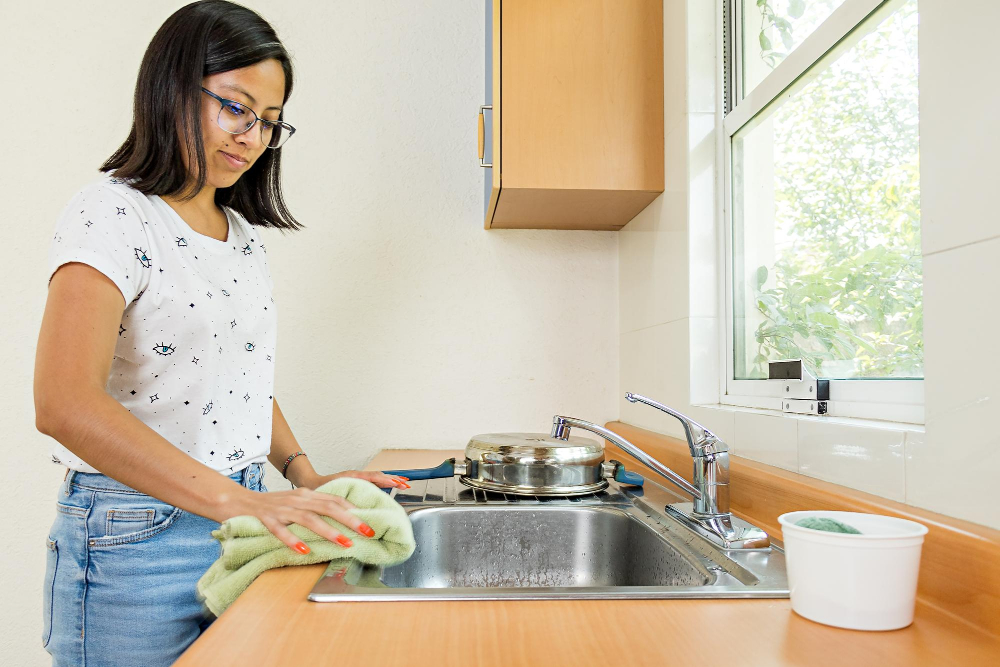
Proper maintenance will help extend the life of your newly refinished sink and keep it looking new for years to come. Here are some tips on how to care for your reglazed kitchen sink:
- Avoid using abrasive cleaners or scrubbers that can scratch the surface.
- Clean up spills and stains as soon as possible.
- Use a soft cloth or sponge with mild soap and warm water to clean the surface regularly.
- Rinse thoroughly after cleaning with water, then dry with a soft towel or cloth.
- Do not place hot pots or pans directly on the surface; use trivets instead.
Warranty and Guarantees

That’s why it’s essential to choose a reputable company that offers warranties or guarantees on their work. A warranty will give you peace of mind knowing that if something goes wrong with the reglazed surface within a specific period, the company will fix it at no extra cost.
Before hiring any contractor for your project, make sure they offer some form of guarantee or warranty on their workmanship and materials used. Be sure also to read through all terms and conditions carefully before signing any contract.
While reglazing your kitchen sink can be an affordable way of giving new life into an old fixture in your home; there are several factors involved in determining its cost. By understanding these factors such as material type, size of the sink area being refinished/reglazed labor costs among others; homeowners can make informed decisions about whether this option is right for them.
FAQ
Is it worth reglazing a sink?
Yes, reglazing a sink is worth it because it is more cost-effective than replacing the sink and can restore its beauty for another 10 to 15 years.
How long does a Reglazed kitchen sink last?
A reglazed kitchen sink typically lasts 3-4 years with proper care.
Does reglazing a sink last?
Yes, reglazing a sink lasts, as it can provide a permanent effect with proper care, lasting 10-15 years before needing to be reglazed again.
Is it possible to Reglaze a kitchen sink?
Yes, it is possible to reglaze a kitchen sink, as various types of sinks including undermount sinks found in kitchens can be reglazed.
What factors can influence the cost of reglazing a kitchen sink?
Factors influencing the cost of reglazing a kitchen sink include the sink’s size, material, condition, color, and labor rates in the area.
Can reglazing a kitchen sink be done as a DIY project or should it be left to professionals?
Reglazing a kitchen sink can be done as a DIY project, but it is often recommended to leave it to professionals for best results.
What are the key steps involved in the reglazing process for a kitchen sink?
The key steps involved in the reglazing process for a kitchen sink include cleaning the sink, sanding the surface, applying primer, applying reglazing material, and polishing the finished surface.




